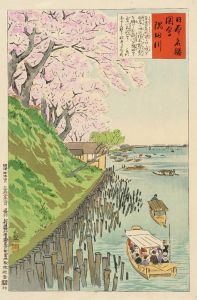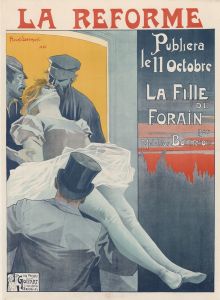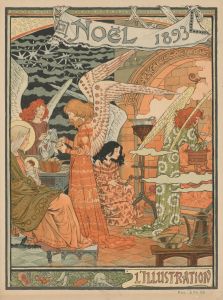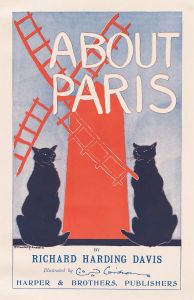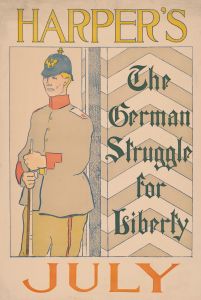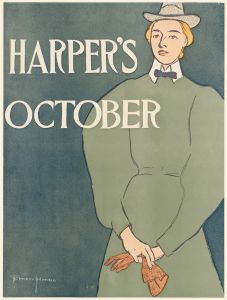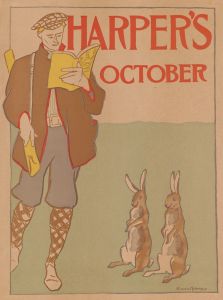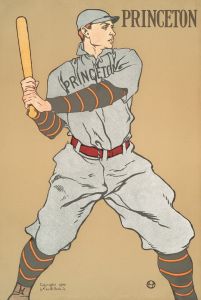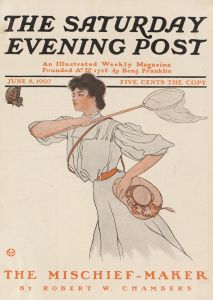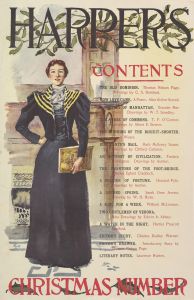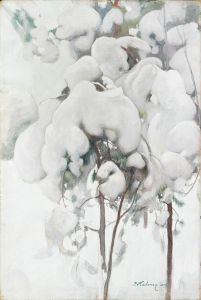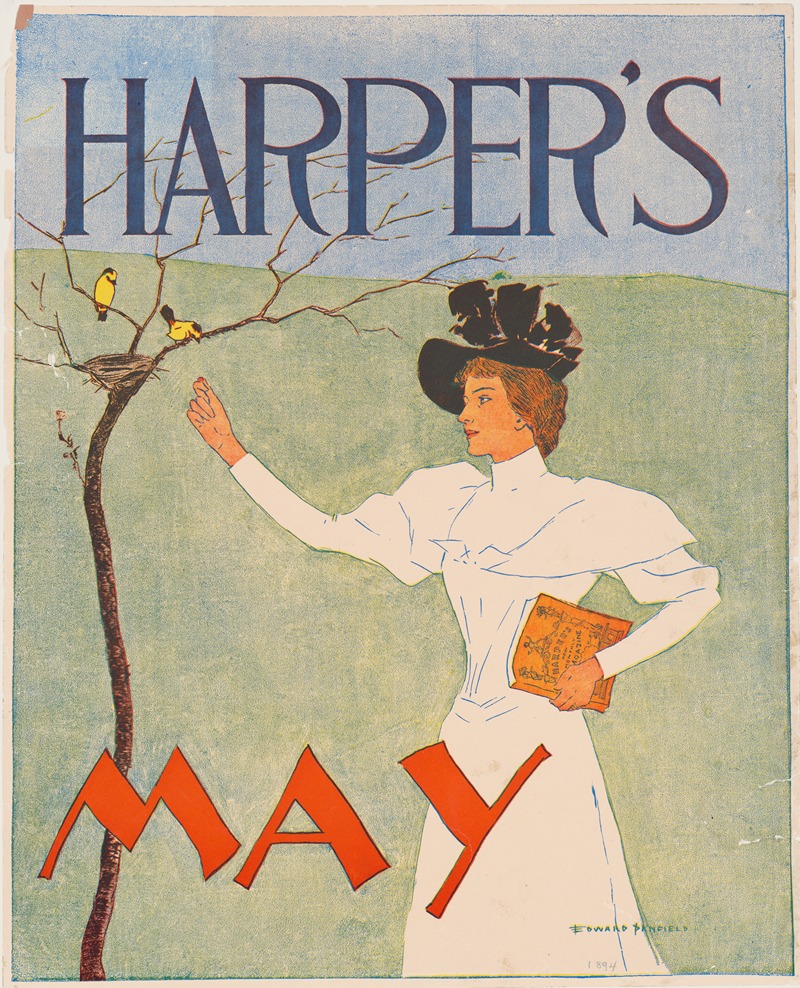
Harper’s May
A hand-painted replica of Edward Penfield’s masterpiece Harper’s May, meticulously crafted by professional artists to capture the true essence of the original. Each piece is created with museum-quality canvas and rare mineral pigments, carefully painted by experienced artists with delicate brushstrokes and rich, layered colors to perfectly recreate the texture of the original artwork. Unlike machine-printed reproductions, this hand-painted version brings the painting to life, infused with the artist’s emotions and skill in every stroke. Whether for personal collection or home decoration, it instantly elevates the artistic atmosphere of any space.
Edward Penfield was an influential American illustrator and a key figure in the development of graphic design in the late 19th and early 20th centuries. He is best known for his work as an art director for Harper's Magazine, where he created a series of monthly posters that are considered iconic examples of American poster art. One of his notable works is "Harper’s May," which was part of this celebrated series.
"Harper’s May" was created in 1896 and is a prime example of Penfield's distinctive style, which combined elements of Art Nouveau with a uniquely American sensibility. This poster was designed to promote the May issue of Harper's Magazine, a leading publication of the time known for its literary and cultural content. Penfield's posters were not only advertisements but also works of art that captured the spirit of the era.
The illustration in "Harper’s May" features a fashionable woman dressed in spring attire, holding a parasol. She is depicted in a serene outdoor setting, which reflects the seasonal theme of the magazine issue. Penfield's use of bold outlines and flat colors was characteristic of his style and contributed to the poster's visual impact. The composition is both elegant and simple, focusing on the figure of the woman and the natural elements around her.
Penfield's work for Harper's Magazine was significant in that it helped to elevate the status of the poster as an art form in America. At the time, posters were primarily used for commercial advertising, but Penfield's designs demonstrated that they could also be appreciated for their artistic merit. His posters were widely distributed and collected, and they played a role in shaping public perceptions of graphic design.
The success of Penfield's posters can be attributed to his ability to capture the essence of contemporary American life while also appealing to the aesthetic tastes of the magazine's readership. His work was characterized by a keen attention to detail, a sophisticated use of color, and a talent for creating engaging compositions that drew viewers in.
Edward Penfield's contributions to the field of illustration and graphic design were significant, and his work for Harper's Magazine remains an important part of his legacy. "Harper’s May" is just one example of how he was able to blend art and commerce, creating images that were both visually striking and culturally relevant. His influence can be seen in the work of later graphic designers and illustrators who sought to combine artistic expression with commercial appeal.
Overall, "Harper’s May" by Edward Penfield is a testament to the power of illustration in the world of publishing and advertising, and it continues to be appreciated for its artistic and historical significance.





